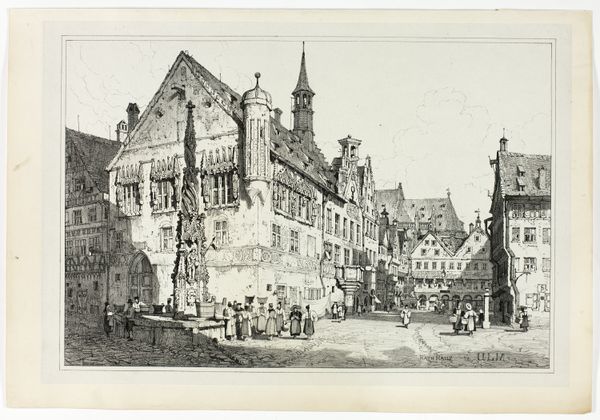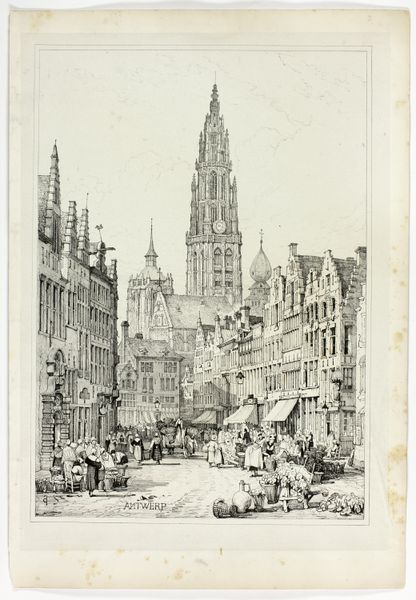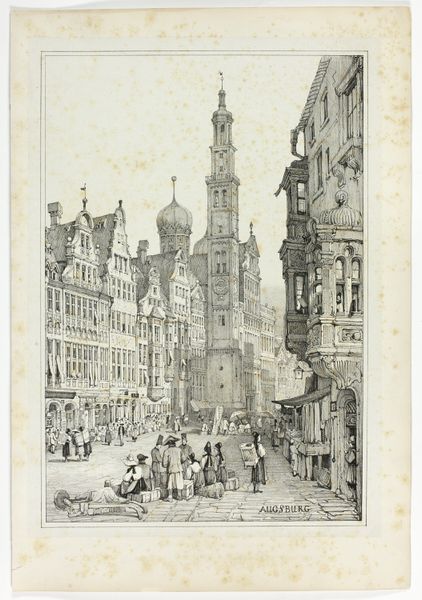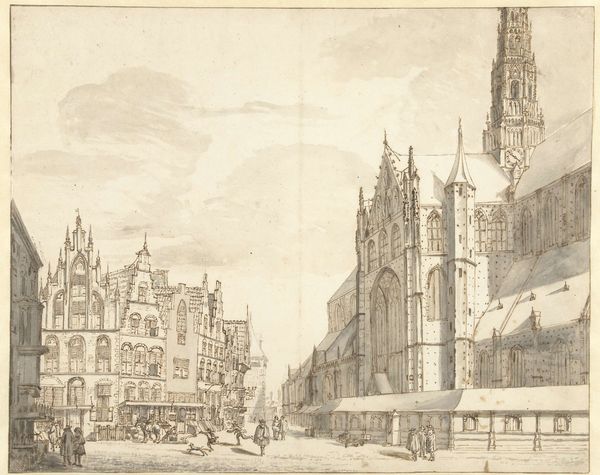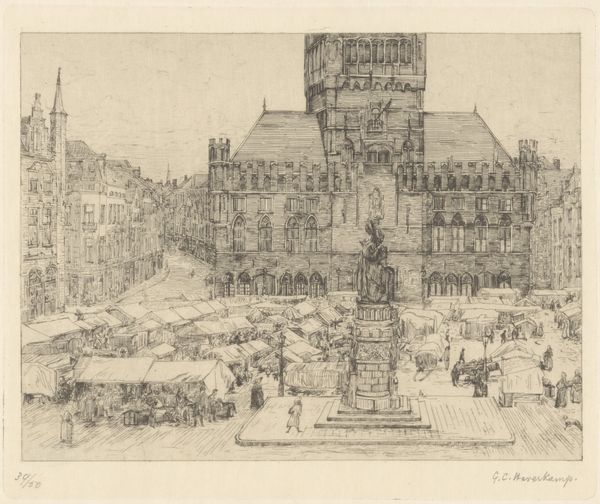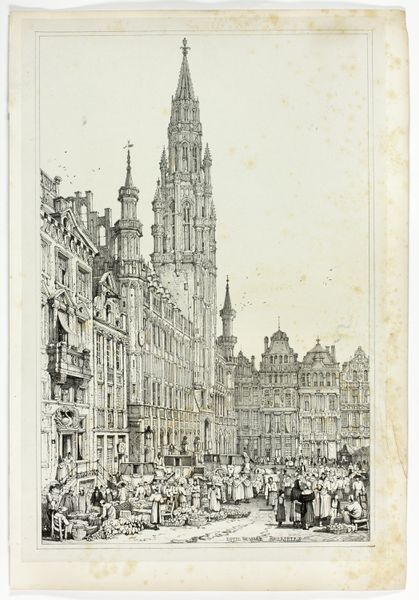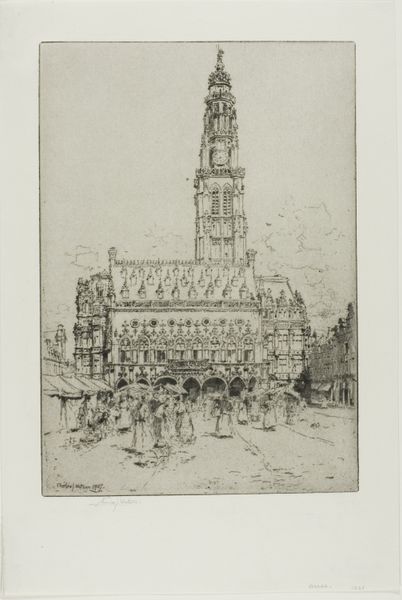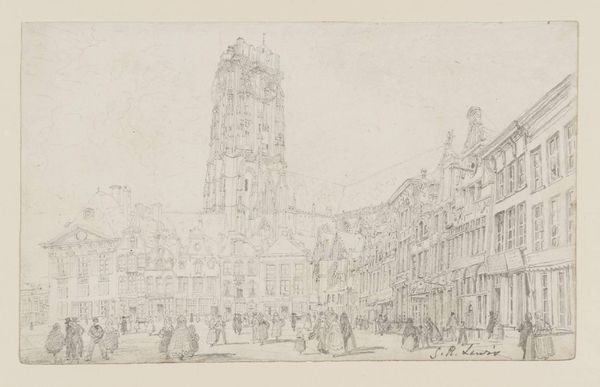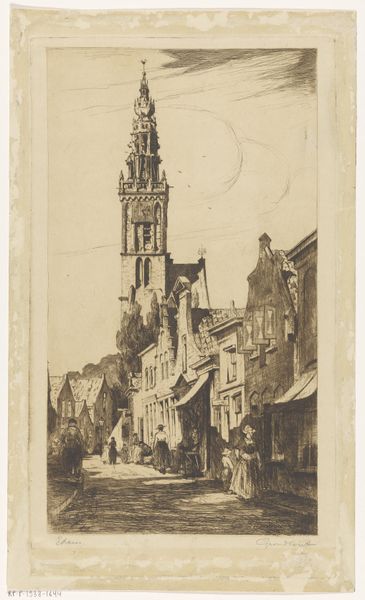
drawing, lithograph, print, etching, paper
#
drawing
#
lithograph
# print
#
etching
#
etching
#
paper
#
romanticism
#
cityscape
#
realism
Dimensions: 290 × 425 mm (image); 310 × 445 mm (primary support); 345 × 500 mm (secondary support)
Copyright: Public Domain
Editor: Samuel Prout's "Maline," created in 1833, depicts a European cityscape through drawing, lithograph, etching, and printmaking on paper. The overwhelming detail, the multitude of tiny lines, really grabs your attention. I'm curious about your perspective. What can you tell me about this piece? Curator: For me, it’s fascinating to consider the processes that produced this image. The combination of etching and lithography suggests a deliberate engagement with mass production and reproducibility. Think about it: How does the etching, with its linear precision, contrast with the lithographic areas, potentially allowing for broader tonal variations? Editor: I see what you mean about the contrasts! It’s also interesting how Prout combined these methods. Curator: Exactly! We also need to look at what that implies regarding the intended audience. Prints like this made cityscapes accessible. We need to think of these images not as unique objects, but items produced and distributed, bought and sold. What does the depiction of the urban environment communicate to the emerging middle class? Editor: That is a great point. Thinking about this piece in relation to accessibility, mass production and consumerism never occurred to me at first! It seemed like such a timeless scene. Curator: Timelessness is an illusion the artist is selling to this emerging market. Look closely, can you discern any indications in the work relating to labour? It seems idealized here. Editor: The activity of people seems, you're right, romanticized in a sense... it is not clear at all who produced this wealth or how society functions materially. This makes me wonder about the relationship of Prout to the places he drew. I mean, who could really afford this? Curator: Exactly, and from a materialist position it forces us to think beyond the simple beautiful image. These things really went hand in hand. It brings a new perspective to considering art history! Editor: This perspective really transformed the way I see this work. I'll certainly be examining other prints differently going forward.
Comments
No comments
Be the first to comment and join the conversation on the ultimate creative platform.
